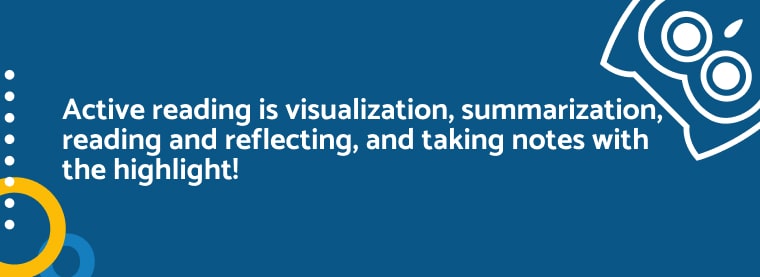Rules and Tips on How to Write Your College Book Review
Table of contents
A book review is, without exaggeration, one of the most interesting writing assignments in a university curriculum. This type of literary criticism allows the reviewer to express his own opinion regarding the material read. Yet, like other types of scientific writing, book reviews involve a certain list of requirements. One must focus on design and structure first. We will look at the following book review guidelines and tips to help you master:
- important tips that a reviewer should consider when preparing to write a book review.
- Practical tips and guidelines to help you craft a high-quality book review that effectively conveys your insights and analysis. Having a book review written, you will be able to make your review informative and engaging.
- The factors and techniques that can take your book review from ordinary to memorable, leaving a lasting impact on your readers and fellow book enthusiasts.
Preparation Before You Write the Book Review
Before we dive into the process of crafting an effective book review, let’s first explore the crucial steps involved in preparing to write a review that truly captures the essence of the book.
Read the Book First!
No matter how trivial it may sound, the key factor to writing a good book review is to read the original in full. It is the only way to create a strong thesis statement. Authors of brief descriptive works often try to convey only key events important to the plot. In turn, the reviewer can look at the work from a fresh angle, highlighting favorite moments and coming to unusual conclusions. Before you write book reviews, think about finding specific examples and learning the peculiarities of the book’s plot.

To improve the efficiency of book reviews, use active reading techniques. This strategy involves highlighting the key points of the book. It also involves taking notes and creating a visualization.
These techniques are used to increase awareness and facilitate further analysis of what you read. Once you apply critical evaluation, it helps to create outstanding book reviews.
If you find yourself struggling to organize your thoughts or complete the review, you can always write my essay for me cheap to get professional help in crafting a well-structured and thoughtful book review.
Understand the Book Genre and Audience
After reading the book and related academic journals, you are ready to start a book review.
- Indicate who the author of the book is and what its title is.
- Determine the book’s genre, main theme, and message.
- Figure out who the target audience for this book is. It means whether it is written for children or adults and aimed at specific people or people of a certain profession.
Book Review Structure Rules
The last part of the preparatory stage to write a book review essay is to become familiar with the structure. It is an essential part of the book reports. Before writing book reviews, make sure to compose a book review outline. It is the basic structure where you outline the main points.
As a way to make things easier for you right now, we have identified a list of five key components to structure a book review:
- Book title;
- Introduction;
- Body or Summary;
- Analysis and evaluation;
- Conclusion.
Book Review Outline Formatting
As with other types of essays, book reviews usually follow the basic 5-paragraph structure. It must have an introduction, three body paragraphs, and a conclusion. Each body paragraph of your book review for school should be logically connected to the previous one. Always start with a topic sentence to provide context right away. A topic sentence provides the general idea disclosed in the paragraph.
How to Write the Review of a Book?
When you know the basic structural elements of a book review, we can move forward. Let’s address the main question. How to write a book review and address all the book’s contents? Let’s start with general evaluation criteria for a book report and then go on to more detail.
Each fragment will contain basic questions to give you a hint on what to write about in a review of a book.
- First, talk about your overall impression of the book. What emotions did the reading evoke, and what thoughts did you have? Avoid spoilers at this stage, but talk about plot twists if you are interested!
- Then, smoothly go on writing a book review by describing the book’s main plot. This step doesn’t require much creativity and is more about stating the facts and providing evidence as you discuss things.
- Clarify whether events occur linearly or chaotically as some character arcs or themes start to change. Mention the number of storylines and their direction with a piece of evidence for each claim.
- See whether the author uses unusual narrative techniques such as flashbacks or multiple perspectives to attract the reader’s attention.
- Talk about character development and state what makes the book accurate in your final thoughts.
Why Use a Brief Summary for a Book Review?
Once you have all the information at hand, write a brief summary for your book review. This can be done with the help of the main characters’ list. Focus on the setting and the main point of the plot:
- What is the basic plot or main argument of the book?
- How is the book structured? Are there chapters, sections, or parts?
- What is the story’s main point, and what are the book’s strengths?
- What makes the book’s content unique?
Pay special attention to the characters in the book as you work on a summary. Authors often put special meaning into the set of character traits of individual characters. Also, note whether there were any changes in the characters’ behavior during certain events.
- Who are the main characters, and what are their primary traits?
- Are the characters well-developed and multi-dimensional?
- Do the characters undergo any significant changes or growth throughout the story?
- What words are used to describe good and evil? Provide examples from a certain paragraph if possible.
- Is there a special passage worth reading to address special themes?
Essential Book Review Elements
Discuss the Author’s Writing Style
One of the key factors when writing about books is determining the writer’s style. Each author tries to bring something new to stand out from other writers. It is not done only with words alone! There are many methods to make the book unique. In case you are not sure that you can understand the author’s world, you can ask for help.
Every article review writer at PapersOwl is ready to advise you on how to distinguish the writer’s outstanding features. They are experts in writing a book review for students and will happily share their notes with you. As a rule, using certain syntax and vocabulary, the author can influence how the audience perceives what is written in every paragraph.
- How would you describe the writing style? (e.g., descriptive, succinct, humorous, serious)
- Are there any distinctive elements of the author’s prose that stood out?
- Did the writing style enhance or detract from the book’s themes or messages?
- Do you wish to compose a positive review?
- Is the evidence convincing for the literary world created?
Evaluate the Book’s Strengths and Weaknesses
When writing a book review, a comparative analysis of the strengths and weaknesses of the work is very important. Highlight the most impressive aspects of the book for yourself in things like character development and a critical assessment of the events. Pay attention to explaining why exactly a certain author’s argument has hooked you.
If certain fragments of the story seemed unnecessary to the reviewer and did not carry much significance, it’s necessary to mention this in the book review. Most reviews only focus on themes without offering a bias, yet you can offer a summary of strong and weak points in your humble opinion.
- What are the strongest aspects of the book?
- What is the intended audience in your opinion?
- Were there any parts of the book that felt unnecessary or redundant?
- Did you feel engaged and connected throughout, or were there parts where your interest waned?
- Is there a book blurb that helps authors support certain things?
It is not obligatory to compare an author with other writers in your review of the book. You can also make a comparative description of the works of one author in different periods of his creation.
If you are familiar with other works by the author of the book you have chosen, do not be afraid to show off your erudition. Try to notice the similarities and divergences of books from different periods, concluding the hidden messages.
- How does this book compare to other works by the same author (if you’ve read any)?
- Are there other books in the same genre that you’d compare it to?
- What sets this book apart from others in its genre?
- Is the story familiar, or does it sound unique?
- What themes have been approached in a new way?
A good book review perfectly balances analyzing objective and subjective factors. Therefore, the reviewer‘s personal opinions must be included in the structure of the essay. Share your emotions in your own words both in the introduction and the conclusion. Tell about the changes in your worldview due to reading the book. If the book did not cause a strong inner response, analyze what exactly caused the lack of reaction. If your opinion is similar to that of other reviews, you do not have to mention it to other readers. Focus on the story alone and tell your reader what you have felt.
- What was your initial reaction upon finishing the book?
- Which parts of the book resonated the most with you?
- Were moments provoking strong emotions like joy, sadness, anger, or excitement?
- What did you feel as a reader during the most intense parts?
- What can you tell your readers before they start reading the book?
If there were quotes that particularly resonated with you, be sure to share them with other readers. Briefly tell why this or that author’s thought is special for you. You can make a short summary before you start with your book review. You can even start your introduction with a quote to help your readers get the right feel.
- Were there any notable quotes or passages that you’d like to highlight?
- What quotes might be already known to most readers? Mention them briefly.
- What should an average review reader know right from the start?
When writing a book review, highlight the main educational message of the book and share your experience, whether the book motivated you to learn more about this book’s argument.
- Did the book inspire you to read more about a particular subject or theme?
- Would you like to read a sequel or another book by the same author?
Writing Tips for an Effective Book Review
You already know what a book review is and how to write one. Now you know that reading a book carefully and following the structure comes first. Some other important tips to impress a reader include:
- Stay objective;
The reviewer needs to strike a balance between expressing own opinions and being objective. For example, you are not a fan of romance novels and are reviewing fiction. Even if you don’t like the kind, try to abstract yourself and professionally evaluate this literary work.
- Provide an example to a reader;
Any argument must be supported by evidence as the reviewer discusses things. Think about what real-life or an example from other literary works you can support your point.
- Criticize the work, not the author;
Always keep in mind that your constructive criticism concerns the author’s book, not the author himself. A professional reviewer discusses every point and knows how to separate a writer’s personal characteristics from his writing talent when they review a book.
- Proofread and edit;
The golden rule of any descriptive essay, including a book review, is to check the spelling several times before submitting the work. Even the most profound essay with a non-trivial meaning can be spoiled by grammatical errors and wrong structure. Make sure all body paragraphs contain a thesis statement.
Book Reviews Have Never Been That Easy with PapersOwl
Writing book reviews is an interesting assignment that tests students’ creativity and analytical skills. When you have an idea of a book review, what it includes, and what factors you should pay attention to when you do a book review, you can easily cope with writing such an essay. Remember to be creative while following our book review tips; the process will be easy and enjoyable. We also advise you to study an example of a book review. Our experienced team is always ready to help you write a review for a book of any complexity.







